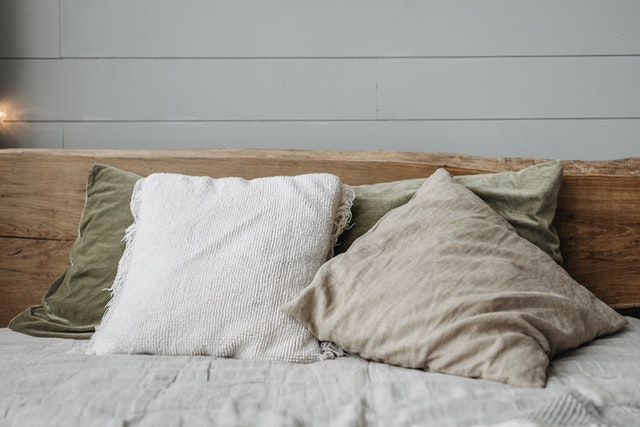Being as playful as they are, your kids deserve restful sleep to help them grow physically active and healthy. One way of ensuring they sleep well is to buy them quality pillows, especially when they hit two years.
Not sure what makes a great pillow? Consider the top seven factors below.
1. Softness And Firmness
Head support is the most important factor in a pillow. The pillow should be firm, but this is different than hard. Firmness means the pillow can effectively support your child’s head without straining their neck.
However, pillows for children should be soft for comfort.
A difficult balance to strike, right?
Here’s the key: find pillows that surrender to the weight of your body but regain their shape after pressing. Pillows that don’t regain their shape after pressing have the potential to restrict breathing.
2. Pillow Cover Material
Most children’s pad covers are made of cotton. When buying a child’s pad, make sure the cotton used is organic. Organic cotton is free from harmful toxins and is unlikely to cause allergic reactions, which is not the case with non-organic cotton and polyester pads.
Though pads made of organic cotton are a little pricey, they are worth buying rather than spending money on medication. You don’t want your loved ones to breathe in toxic chemicals as they sleep, so going organic is the best option for you. Before you buy a pad, check the label. You’ll find out what material it’s made of.
However, if you can’t buy the organic version, you can buy synthetic. Just make sure you wash it several times before allowing your kid to use it so that you wash away any residual chemicals on the pad.
3. Hypoallergenic Materials
Hypoallergenic children are highly sensitive to microbes, mold, dust mites, and dust. So if you have a hypoallergenic child, choose a pillow made from a material that doesn’t attract these allergens, like PrimaLoft.
On top of this, always make sure the head support is always clean before allowing your child to use it.
4. Thread Count
Before buying a pillow, find out how many threads are in each square inch of the pillow fabric. This information is available on the pillow label. The thread count of a pillow determines its durability. A pad with a higher thread count is stronger, durable, and feels smoother. Also, pillows with a higher thread count are less scratchy and more comfortable.
5. Size
A child doesn’t need a queen- or standard-sized pillow. A pillow measuring about 13 inches or 18 inches should be comfortable enough for your kid. These small pillows can fit in small sleeping spaces and are more affordable.
6. Fill Material
Buy your kids pillows filled with materials like memory foam or synthetic fiber. Most are filled with materials like hemp and buckwheat. Though these materials are eco-friendly, they aren’t good for your children because they can choke them. Other materials used to fill pillows are down feathers, which are also known to trigger allergies.
7. Noise
We recommend considering the noise produced when the pillow used. Noisy pillows can disrupt a kid’s sleep, especially if they like turning over several times at night. Some synthetic pillow fillers make a cranking kind of noise when they are pressed, which isn’t ideal.
Conclusion
The type of pillow you choose can completely affect the comfort, safety, and health of your child. You can get the best pillow for your kid by considering the above factors, like material, shape, and size.
Whichever pillow you choose, make sure it’s washed regularly and try to avoid non-organic cotton if possible.
Related Posts: